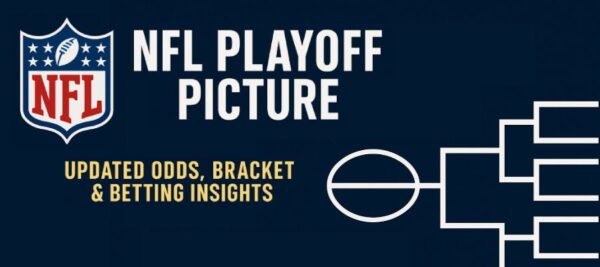If you a keen follower of the NBA and the NHL Playoffs, then the Betting Zig-Zag Theory is a term that you have probably come across at some point in your sportsbook endeavors.
The online betting theory has particularly been popularized over the past decade or so, with the NBA and NHL best-of-seven playoff series—which uses the 2-2-1-1-1 playing format—being the driving force for its proponents.
MyBookie Teaches You Zig-Zag Theory
Sports Betting 101: Playoff Betting’s Hidden Weapon: The Zig-Zag Method for Guaranteed Profits!
How to Bet on Sports | MyBookie wants you to be a better gambler with our Sports Betting Guide
Table of Contents: Zig-Zag Theory
Zig-Zag Theory Explained With Case-and-Point ror Playoffs
Learn a Popular Strategy in Playoffs: Zig-Zag Theory
Zig-Zag Theory: NBA Playoff Series Sports Betting
Zig-Zag Theory: NHL Playoff Series Sports Betting
Rejoinder on Zig-Zag Theory Betting
Zig-Zag Theory Explained With Case-and-Point ror Playoffs
In essence, the philosophy behind the Zig-Zag Theory is that playoff games, especially when used at abest-of-seven series format.
These games have a tendency of shifting winning momentum between home and road games depending on how each team performed in the previous game.
In other words, the idea in this theory is that each game in a playoff series is often affected by the result of the game that preceded it.
Bettors should be able to study the momentum between games and duly use that to handicap future bets.
^ TopLearn a Popular Strategy in Playoffs: Zig-Zag Theory
The Zig-Zag Theory is a popular betting strategy used in playoff series for sports like basketball and hockey.
The core principle is based on the idea that teams tend to bounce back after a loss, particularly in a best-of-seven series.
Bettors who follow this theory place wagers on teams expected to rebound from a defeat, especially when they have strong motivation or situational advantages.
What is the Zig-Zag Theory in sports betting?
The logic behind the Zig-Zag Theory is that playoff teams are relatively evenly matched, and adjustments are made from game to game.
Teams that lose often make strategic changes, increase their intensity, and show greater urgency in the next game, particularly if they are down in the series.
Does the Zig-Zag Theory apply to all sports?
The Zig-Zag Theory is primarily applied to sports with structured playoff series, such as the NBA and NHL.
It is not as effective in single-elimination formats such as the NFL playoffs, NCAA March Madness, or regular-season games, where motivational factors and adjustments vary more unpredictably.
While some bettors have attempted to apply it to other sports, its best use remains in best-of-seven series where teams play the same opponent multiple times in a short period.
Does the Zig-Zag Theory apply to both home and away teams?
Yes, but it works differently depending on the situation.
In general:
- Away Teams After a Loss:
These teams tend to be undervalued by oddsmakers and are often a good bet, particularly in Game 2 after losing Game 1 on the road. - Home Teams After a Loss:
These teams are often in a strong position, especially in must-win situations like Game 3 when down 0-2 in a series.
Understanding how home-court or home-ice advantage influences team performance is key to applying the Zig-Zag Theory effectively.
^ TopZig-Zag Theory: NBA Playoff Series Sports Betting
Using the Zig-Zag Theory to Handicap NBA Betting Lines
In the NBA playoffs, home court advantage is usually a key factor for success.
A big reason why teams with home court advantage tend to succeed a lot in the 2-2-1-1- format.
Is there Home Court Advantage in Playoffs?
It begins with 2 home games (for the team with the home court advantage), followed by two home games for the other team.
Then alternating home and away games for the remainder of the series.
As per the Zig-Zag Theory, teams with home court advantage typically tend to start the series strongly, often gong 2-0.
By the time we get to get to Game 3, the lesser-seeded team is thus likely to find itself in a do-or-die situation trying to avoid going to the scary 0-3 hole at home and being one game away from losing the series.
Going to Game 3 with a 0-2 hole is therefore viewed by proponents of the Zig-Zag Theory as a perfect time for the lesser-seeded team to play its heart out and bounce back with a win or at least a cover of the spread.
With an outright win-rate of over 60 percent for lower-seeded teams that go to Game 3 with a 0-2 hole, it goes without saying that there is certainly some truth to this theory.
The other instance that is considered as perfect opportunity to implement the Zig-Zag Theory is when a higher seeded team loses Game 1 at home (mostly as a favorite).
With Game 2 often seeing the home team bouncing back with an outright win.
Historically-speaking, this scenario produces a solid winning percentage of around 75 percent for bettors banking on the home team to bounce back with a victory in Game 2.
Depending on the nature of the previous result, the final three games of the series (2 home games for the higher-seeded team sandwiching 1 home game for the lower-seeded team) can also produce measured Zig-Zag Theory betting success.
How Does the Zig-Zag Theory Apply to an NBA Playoff Series?
In the NBA, playoff series are intense, with teams making tactical adjustments after each game.
The Zig-Zag Theory suggests betting on the team that lost the previous game, as they are likely to respond with increased effort and adjustments.
This is especially true for teams down 0-2 in a series, where desperation plays a major role.
Historically, teams that lose Game 1 often cover the spread in Game 2.
Similarly, if a team goes down 0-2 and returns home for Game 3, they tend to have a high win rate.
Game 5 is another key moment—teams that are down 3-1 often play with extreme urgency to extend the series.
What are the Key Factors to Consider When Using the Zig-Zag Theory for an NBA Playoff Series?
- Injury Reports
If a key player is injured, the effectiveness of the Zig-Zag Theory diminishes. - Fatigue and Depth
Teams with deeper benches are better equipped to bounce back from losses. - Coaching Adjustments
Experienced coaches are more adept at making in-game and between-game adjustments. - Betting Line Movement
Oddsmakers adjust spreads based on public perception. If a team was a heavy favorite in Game 1 but lost, the spread in Game 2 might present value. - Situational Urgency
Teams facing elimination, down 3-1 in a 7 game series, will often outperform expectations.
How do I analyze pace of play in an NBA Playoff Series?
Pace of play refers to the number of possessions per game.
Faster-paced teams may struggle to adjust if their shooting efficiency drops, while slower-paced teams focus on half-court execution and defense.
If a team that lost a game played at a slower pace, they may adjust by speeding up play to create more scoring opportunities in the next game.
Making them a more attractive bet in line with the Zig-Zag Theory.
^ TopZig-Zag Theory: NHL Playoff Series Sports Betting
Using the Zig-Zag Theory to Handicap NHL Betting Lines
Whereas home ice advantage isn’t as strong in the NHL as home court advantage is in the NBA Playoffs, some modicum success can be found if the Zig-Zag Theory is applied appropriately.
The most common scenario is when a team is coming off a huge win (which often comes with complacency that leads to an upset in the next game.)
Also, when a home team is coming off a narrow loss (that motivates them to correct their few mistakes for a winning result in the next game.
Otherwise, in most instances, the general trends explained above in the NBA section apply more-or-less in the same way in NHL betting.
How Does the Zig-Zag Theory Apply to an NHL Playoff Series?
In the NHL, teams often respond to a playoff loss by making defensive adjustments, changing goaltenders, or increasing physical play.
The Zig-Zag Theory suggests that the team that lost the previous game is more likely to win the next one due to these factors.
One of the most notable Zig-Zag patterns in the NHL is in Game 2.
If a team loses Game 1 on the road, they frequently come back strong in Game 2, making them a smart betting pick.
Additionally, teams returning home down 0-2 tend to perform very well in Game 3.
What Are the Key Factors to Consider When Using the Zig-Zag Theory for an NHL Playoff Series?
- Goaltender Performance
A hot goalie can override the Zig-Zag effect, while a struggling one can make it stronger. - Injury and Fatigue
The NHL Playoffs are grueling. Fatigued teams may struggle to bounce back after a loss. - Line Matchups
Coaches make tactical adjustments, particularly at home where they control line changes. - Momentum and Confidence
Some teams have a track record of bouncing back stronger after losses. - Public Betting Trends
If a losing team is heavily bet on in the next game, oddsmakers may adjust the odds accordingly.
How Do I Analyze Power Play and Penalty Kill in an NHL Playoff Series?
Special teams play a crucial role in playoff success. When applying the Zig-Zag Theory, consider:
- Power Play Efficiency
A team with a strong power play that struggled in one game may adjust and improve in the next. - Penalty Kill Success
If a team allowed multiple power-play goals in a loss, expect them to adjust defensively in the next game. - Referee Tendencies
Some referees call more penalties than others, which can impact special teams play.
Teams that rely heavily on their power play may struggle if their opponent adjusts and reduces penalties.
Whereas teams that excel in 5-on-5 play are often more reliable bounce-back bets.
The Zig-Zag Theory is a time-tested betting strategy for NBA and NHL playoff series, based on the idea that teams respond strongly to losses.
While not foolproof, it provides a structured approach to identifying value bets.
Successful bettors combine Zig-Zag principles with in-depth analysis of team adjustments, injuries, coaching decisions, and game pace to maximize their chances of making profitable wagers.
^ TopRejoinder on Zig-Zag Theory Betting
Like all theories, the Zig-Zag Theory is not a foolproof method.
Injuries, suspensions, motivation (i.e. looking to end a bad history) and momentum can affect the theory invariably.
So caution and consideration of all the circumspect aspects of a game is crucial when looking to profit from this popular and well-founded, but equally risk, betting strategy.

MyBookie’s Sportsbook Betting Guide | Zig-Zag Theory
Since you now know the basics of the Zig-Zag Theory, take your betting strategy to the next level with MyBookie’s Sports Betting Guide.
Time to sharpen your knowledge and make smarter wagers by understanding how the Zig-Zag Theory impacts betting on sportsook odds!
- Popular NFL Betting Strategies & Theories
- What is the Martingale Betting System?
- Sportsbetting Strategies: Anti-Martingale (Reverse Martingale)
- Football Betting Systems That Work
- Understanding The MLB Betting Underdog System – Sports Betting
- Optimal Strategy for Betting The NBA Playoffs at MyBookie
Sports Betting Center
Sports Odds and Lines
| NFL Betting |
| College Football Betting |
| NBA Betting |
| College Basketball Betting |
| MLB Betting |
Sportsbook Odds | MyBookie Online
^ Top




